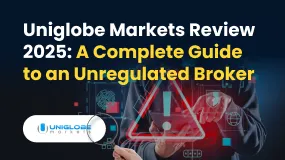简体中文
繁體中文
English
Pусский
日本語
ภาษาไทย
Tiếng Việt
Bahasa Indonesia
Español
हिन्दी
Filippiiniläinen
Français
Deutsch
Português
Türkçe
한국어
العربية
Two Methods for Trading News
Abstract:There is no one best way to trade the news. When news breaks, the price often jumps in one way or reacts slowly to the information as traders assess the result in comparison to market expectations.

There is no one best way to trade the news.
When news breaks, the price often jumps in one way or reacts slowly to the information as traders assess the result in comparison to market expectations.
With this knowledge, there are two primary ways to trade the news:
1) Having a bias in one way
b) Possessing an asymmetric bias
Orientational Bias
When you have a directional bias, you anticipate that the market will move in a particular way when the news is announced.
Knowing what news stories will impact the market is important when looking for a trade opportunity in a certain direction.
Actual vs. Consensus Number
Analysts will make some sort of prediction about the figures that will be announced days or even weeks before a news item is published.
This number will vary depending on the analyst, as we discussed in a previous session, but there will typically be one that the vast majority of them agree on.
A consensus number is this one.
The number that is provided when a news story is made public is referred to as the real number.
“Buy the rumor, sell on the news,” they say.
This idiom is frequently heard while talking about the forex market since it frequently seems as when a news report is out, the movement doesn't correspond to what the report would have you believe.
Let's take the case where it is anticipated that the unemployment rate in the US will rise. Consider a scenario in which the consensus for the forthcoming report is 9.0% and the unemployment rate was 8.8% in the previous month.
A consensus of 9.0% indicates that major market participants anticipate a worse U.S. economy, which would lead to a lower dollar.
Big market participants won't wait until the report is actually out to start acting and taking a position as a result of this expectation.
Before the real figure is disclosed, they will start selling their dollars for other currencies.
Let's imagine the actual unemployment rate is reported to be 9.0%, as was predicted.
Upon seeing this, a retail trader could say, Okay, this is awful news for the U.S. The moment has come to short the dollar.
However, you discover that the markets aren't quite going in the direction you expected when you log on to your trading site to begin selling the dollar.
In fact, it's rising!
This is due to the fact that the major players have altered their positions long before the news story ever broke and may now be profiting from the news event itself.
Let's take a look at this scenario again, but this time suppose that the report actually revealed an unemployment rate of 8.0%.
Because of the consensus, market participants anticipated that the unemployment rate would increase to 9.0%. However, the data revealed that the rate actually declined, demonstrating the strength of the dollar.
Because the major market participants weren't expecting this to occur, what you would see on your charts would be a massive dollar rise across the board.
They are all attempting to change their opinions as quickly as possible now that the report has been issued and it says something completely different from what they had anticipated.
The same thing would occur if the report's actual unemployment rate was 10.0%.
The only difference would be that the dollar would crash instead of rising!
The large players would sell more of their dollars as the market consensus was 9.0% but the actual report revealed a higher unemployment rate of 10.0% since the U.S. now appears to be much weaker than it did when the projections were initially made.
You can better predict which news items will really cause the market to move and in which direction by keeping track of both the market consensus and the actual figures.
unbiased without direction
The non-directional bias method is a more popular news trading tactic.
This approach ignores directional bias and just takes advantage of the fact that a significant news event will precipitate a significant shift.
The direction of the currency market's movement is irrelevant. All we want is to be present when it happens!
This implies that you have a plan in place to enter that trade whenever the market swings in either direction.
Non-directional bias refers to the lack of a prejudice on whether the price will increase or decrease.

Disclaimer:
The views in this article only represent the author's personal views, and do not constitute investment advice on this platform. This platform does not guarantee the accuracy, completeness and timeliness of the information in the article, and will not be liable for any loss caused by the use of or reliance on the information in the article.
Read more

Inzo Broker Review 2025: Is It Legit or a High-Risk Gamble?
When you ask, "Is inzo broker legit?" you want a clear, straight answer before putting your money at risk. The truth about Inzo Broker is complicated. Finding out if it's legitimate means looking carefully at its rules, trading setup, and most importantly, the real experiences of traders who have used it. The broker shows a mixed picture - it has official paperwork from an offshore regulator, but it also has many user warnings about how it operates. This review gives you a fair and fact-based investigation. We will break down all the information we can find, from company records to serious user complaints, so you can make your own clear decision.

INZO Broker No Deposit Bonus: A 2025 Deep Dive into Its Offers and Risks
Traders looking for an "inzo broker no deposit bonus" should understand an important difference. While this term is popular, our research shows that the broker's current promotions focus on a $30 welcome bonus and a 30% deposit bonus, rather than a true no-deposit offer. A no-deposit bonus usually gives trading funds without requiring any capital from the client first. In contrast, welcome and deposit bonuses often have rules tied to funding an account or meeting specific trading amounts before profits can be taken out. This article gives a complete, balanced look at INZO's bonus structure, how it operates, and the major risks shown by real trader experiences. Read on!

Uniglobe Markets Review 2025: A Complete Guide to an Unregulated Broker
Uniglobe Markets claims to be an online trading company that offers many different types of investments, including foreign currency and raw materials. The company tries to attract traders by offering high leverage, different account options, and popular MetaTrader trading software. However, there is one major problem: the company does not have proper regulatory oversight. This creates serious concerns about the safety of clients’ capital and whether the company operates honestly. Read on to learn more about its regulatory status.

The 5%ers Review: Is it a Scam or Legit? Find Out from These Trader Comments
Did you face reduced leverage and hiked fees without any explanation from The 5%ers broker? Do you find The 5%er rules strange for getting a funded account from this prop trading firm? Has the broker closed your trade inappropriately, preventing you from making gains in the forex market? All these allegations have dominated The 5%ers review segment online. Looking at this, the WikiFX team investigated and found some startling comments against the broker. In this article, we have shared those complaints. Read on!
WikiFX Broker
Latest News
Is Fyntura a Regulated Broker? A Complete 2025 Broker Review
Zetradex Exposed: Withdrawal Denials, Account Freeze & Bonus Issues Hurt Traders
Is Forex Zone Trading Regulated and Licensed?
PINAKINE Broker India Review 2025: A Complete Guide to Safety and Services
Exness Restricted Countries List 2025 Explained
Is Uniglobe Markets Legit? A 2025 Simple Guide to Its Safety, Services, and User Warnings
Is Inzo Broker Safe or a Scam? An Evidence-Based Analysis for Traders
WikiEXPO Dubai 2025 “Welcome Party” Kicks Off Tonight!
He Trusted a WhatsApp Group and Lost RM659,000
Moomoo Singapore Opens Investor Boutiques to Strengthen Community
Currency Calculator



